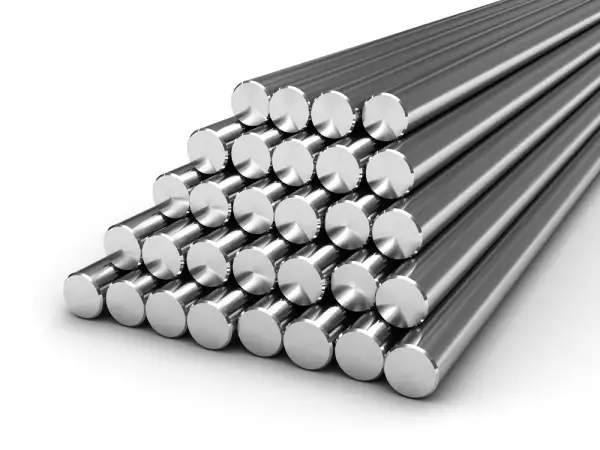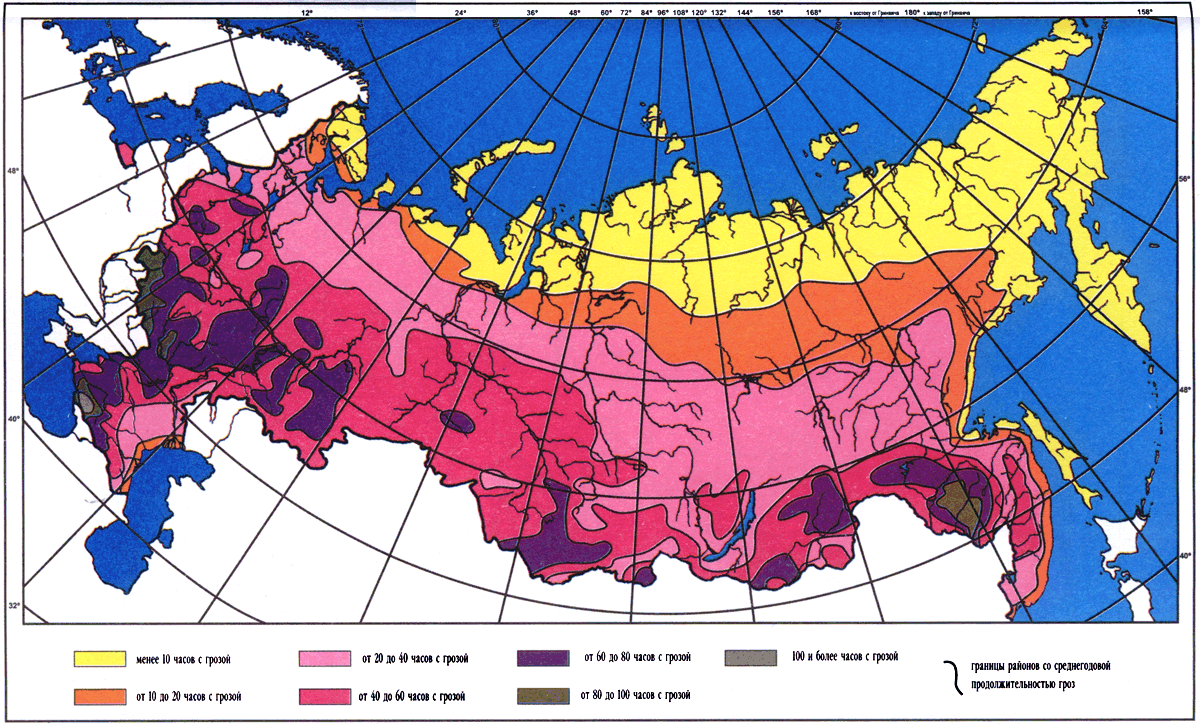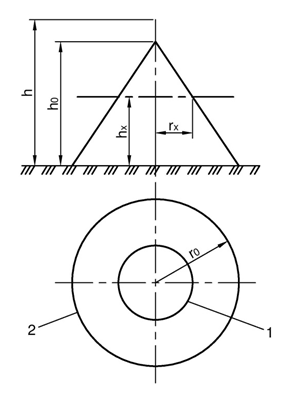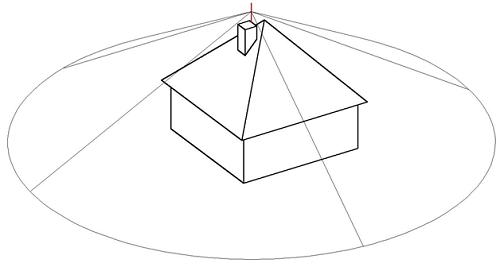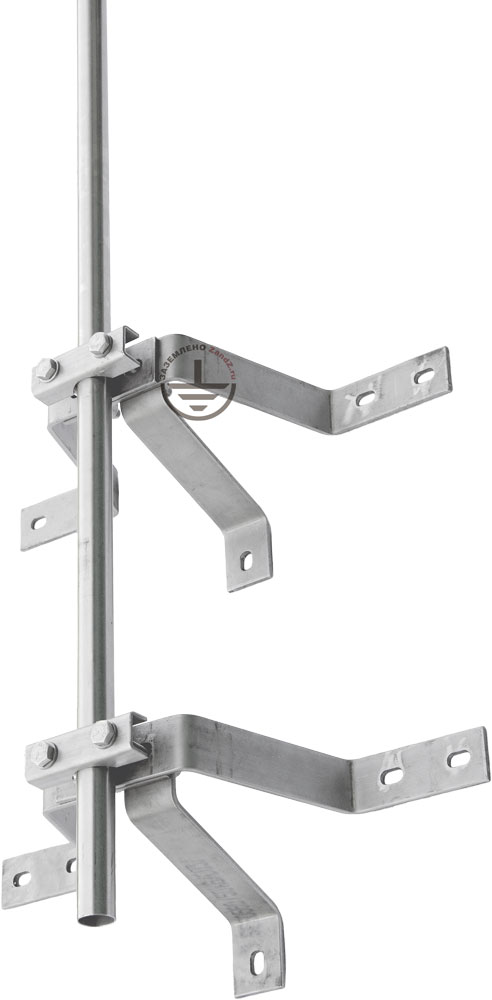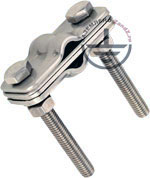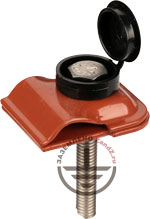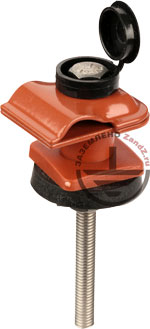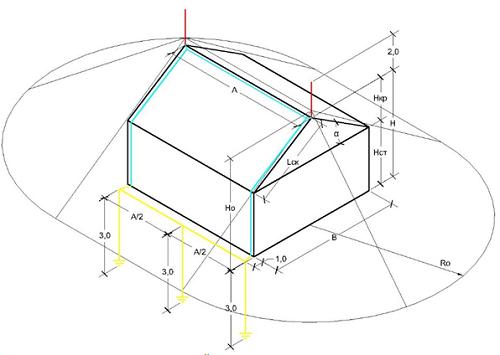The necessity to install a lightning protection system in a private house is determined by the house owner based on the probability of destruction or damage of the property by lightning. National regulations do not impose requirements on the mandatory implementation of a lightingin protection system for private houses.
The probability of a lightning strike into an object depends primarily on the duration of thunderstorms in the area of its location.
This relation for a rectangular house 10x12 m in size and a ridge height of 8 m is shown in the table below:
|
The average annual duration |
The probability of a lightning strike into a house 10 x 12 x 8 m in size* |
A lightning protection system includes a device for protection against direct lightning strikes (external lightning protection system) and devices for protection from the secondary effects of lightning (internal lightning protection system). In some cases, a lightning protection system may comprise only internal or only external devices.
An external lightning protection system protects an object from a direct lightning strike. Its impact is dangerous primarily because of the high lightning channel temperature, which can result in the inflammation of combustible structures of the house.
More information about the dangers of lightning storm can be found in a series of articles "Lightning protection for beginners" by Professor E. M. Bazelyan.
External lightning protection system components and construction
An external lightning protection system consists of three components: lightning protection rods, which receive a direct lightning strike; a grounding device that ensures the spreading of current in the soil, and down conductors connecting the first two elements.
Lightning protection rods
To choose the number and height of the lightning protection rods it is necessary to calculate the protection zones. The estimated protection zone of air terminal masts should cover the whole volume of the protected facility.
A protection zone of a lightning protection rod represents a cone with its apex matches the vertical axis of the mast. The dimensions of such cone depend on the required reliability.
According to SO 153-34.21.122-2003 "The instructions for lightning protection of buildings, structures and industrial communications", the dimensions of cone ensuring 0.9 reliability are determined by the following formulas:
Protection zone of a single lightning rod:
1 - protection zone boundary at level hx2 - the same as at the ground level
Installing a free-standing mast to protect the house is not feasible, as its height should be substantial (up to 30 meters). This is not just expensive and labor-intensive, but also increases the total number of lightning strikes into the plot in question. An optimal solution is to place masts directly on the protected object.
One mast would be sufficient only for houses with a steeple or pyramidal roof if such mast is placed on top of the roof.
The reliable protection of a house with a rectangular gable roof (with the roof slope of at least 35 °) requires the installation of two masts 2 meters high at the edges of the roof ridge. For houses of a more complex shape, it is required to make calculations based on structurally practical locations of the air terminal masts installation.
A lightning protection meshed cage can be used for roofs with a maximum slope of 7 °, which is not typical for a private house roofing. In addition, the modern scientific community does not confirm the effectiveness of meshed cage protection from direct lightning strikes (you can learn more on this in "The issues and challenges of regulatory documents")webinar .
Lightning protection rods should be made of materials and have sizes (cross-sectional area, thickness) in accordance with GOST R IEC 62561.2-2014.
Down conductors
The diameter of down conductor made of round stock should be at least 8 mm. Down conductors shall be placed so that current between a lightning strike point and the soil could spread along several parallel paths, and the length of these paths should be minimal. It is recommended to lay down conductors at a maximum distance from doors and windows.
Direct contact of a down conductor having a correctly chosen cross-section with wall and roof materials cannot cause a fire as the increase of the conductor temperature under the influence of the lightning current is not enough even to char wood, not to mention other low-flammable materials. Additionally, the thermal effect is very short.
Grounding device
Whenever possible, use steel foundation piles or interconnected reinforcing bars of the building's concrete foundation as a grounding device. This solution is applicable when connectivity is possible (the outlets of fittings are available) and when bituminous and bituminous-latex coatings are used as a waterproofing. Epoxy and other polymer coatings prevent electrical contact between the foundation and the soil, and therefore, such foundations can not be used as a natural grounding.
Ready-made grounds should be placed under the asphalt pavement or rarely visited places located away from walkways.
A grounding device connected to the lightning protection rod should have the following minimum structure:
Three or more vertical electrodes at least 3 meters long combined with a horizontal electrode with a distance between the vertical electrodes of at least 5 meters.
Ground electrodes shall be located outside the protected facility and be spaced apart from each other as much as possible. The preferred depth of the electrodes laying shall be at least 0.5 m; a distance from the walls of the object shall be 1 meter.
The dimensions of grounds shall comply with the requirements of the corrosion and mechanical resistance. Normative documents (GOST R 50571.5.54-2011) specify the minimum dimensions of electrodes depending on materials they a made of.
Notes
* The probable number of lightning strikes per year for a facility is calculated using the following formula:

where:
A is house length in meters
B is house width in meters
H is house height in meters
n is the average annual number of lightnings that stike 1 km2 of earth's surface, 1 / (km2*year)
The specific density of lightning strikes into the area n is determined based on the average duration of storms in hours as follows:
|
Average annual duration |
Specific density of lightning strikes into earth n, 1 / (km2*year) |
Lightning strike period:
External lightning protection components
Please visit the relevant pages of our website to view the full range of components for lightning protection.
Buy
Please visit our convenient online store on Buy page to view the current prices and buy all components required to build a high-quality and reliable external lightning protection system.
An example of a lightning protection system based on GALMAR and ZANDZ products
A list of product that can be used to build a complete external lightning protection system is shown on the right side of the page. All the proposed products comply with the requirements of national regulations as to the minimum size, contact connection quality, mechanical strength, service life, etc.
Air terminal masts are fixed on vertical surfaces of walls, chimneys or air ducts. When positioning the masts one should consider the overhanging length the roof slope over the walls and examine the possibility to use 21101G / 21102G holders.
Most of the down conductor clamps are available in two versions: painted galvanized steel and copper. The fastening of down conductors by clamps is performed in increments of 1 meter. The type of clamps is selected based on the roof surface type (flat, ray, skate, facade, etc.) and the roofing material (steel profile, natural tile, etc.). Please note that anchor bolts are not included with the facade and roof clamps. The type and length of such bolts should be selected depending on the base material.
It is also possible to mount down connectors on the roof drain system of the house (fix them to the water-shoot or gutter).
The grounding device is assembled from components of a modular grounding system.
An example of a complete set of products for the lightning protection of a rectangular house having dimensions 8x10 m with a ridge height of 8 m and a roof slope angle of 35 °.
The roofing material is metal tiles, and the wall material is timber.
A = 10 m; B = 8 m; H = 8 m; α = 35 °;
Hf = 3.5 m; Hw = 4.5 m; Lsl = 6.1 m
The air terminals are connected together to make two down conductors going from each air terminal.
If you have any difficulty in calculating or selecting the components you can always turn to our technical center.
Related Articles:
 Grounding in the cellar of the single-family house - is it possible?
Grounding in the cellar of the single-family house - is it possible?
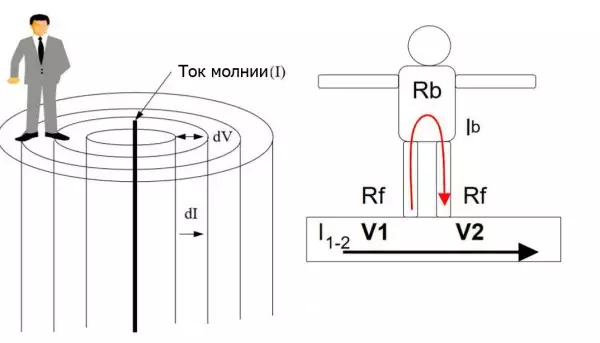 Step Voltage: Dangerous Obscurity and Reliable Protection
Step Voltage: Dangerous Obscurity and Reliable Protection
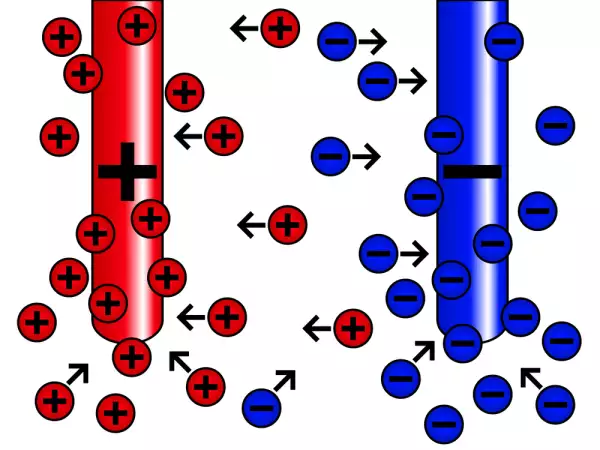 Nature of Electrochemical Corrosion
Nature of Electrochemical Corrosion
 Public Safety in Land Transport in case of Direct Lightning Strike
Public Safety in Land Transport in case of Direct Lightning Strike
